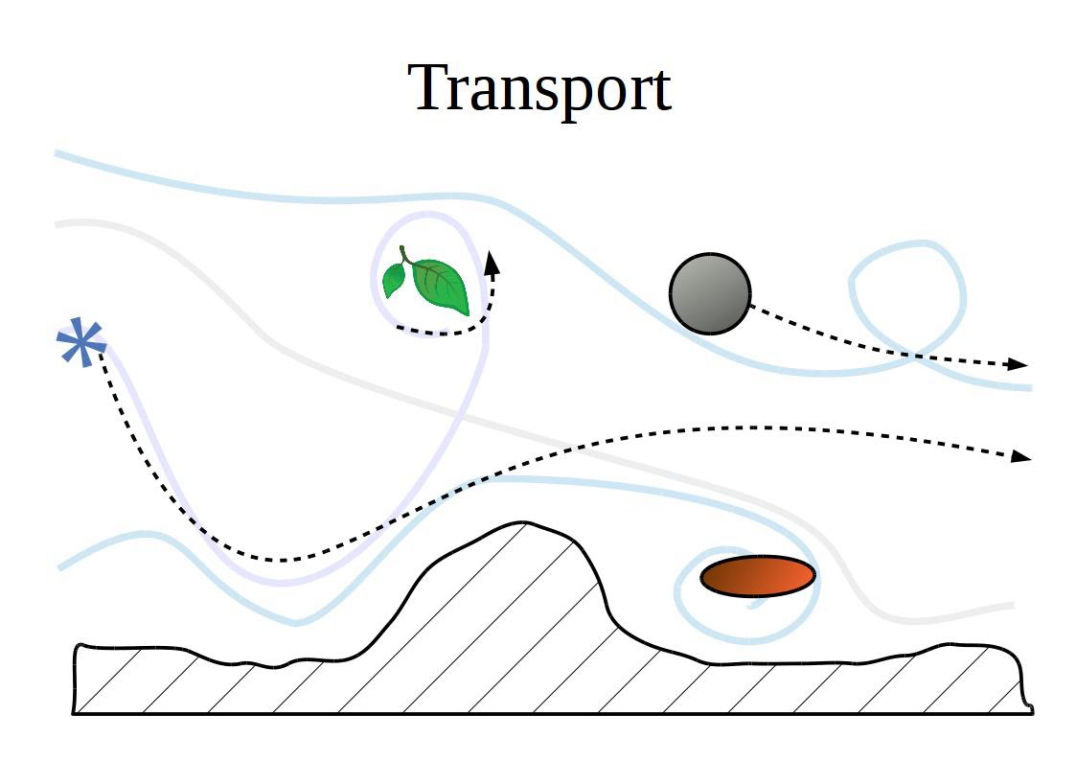
Keywords
Inertial particles, non-spherical particles, near-wall turbulent transport, preferential concentration.

Inertial particles, non-spherical particles, near-wall turbulent transport, preferential concentration.
Particle transport is concerned with the motion of particles immersed in a flow, i.e. an object (such as solid objects, droplets or bubbles) in suspension in liquid or air. It is sometimes referred to as particle dispersion, especially in atmospheric sciences.
Particles are omnipresent in nature and are transported by a variety of flows. Their transport has implications in a wide range of situations, including environmental & industrial applications such as:
+ The dispersion of volcanic cloud and subsequent ash fallout in the atmosphere
+ The transport of plastic debris in marine systems (rivers and oceans)
+ Pollutant transport in the air (indoor and outdoor)
+ The dispersion of human-respiratory droplets (possibly containing viruses) in the air
The motion of a particle suspended in a fluid is driven by a variety of forces acting on the particle. This includes the following contributions:
+ Hydrodynamic forces, which amount to the action of the fluid on a particle;
+ Inter-surface forces, which result from the action of a surface (e.g. the floor, a building) on a particle;
+ Inter-particle forces, which correspond to interactions between two or more particles;
+ External forces, which contain electro-magnetic forces or gravity effects.
Develop a free website - Read more